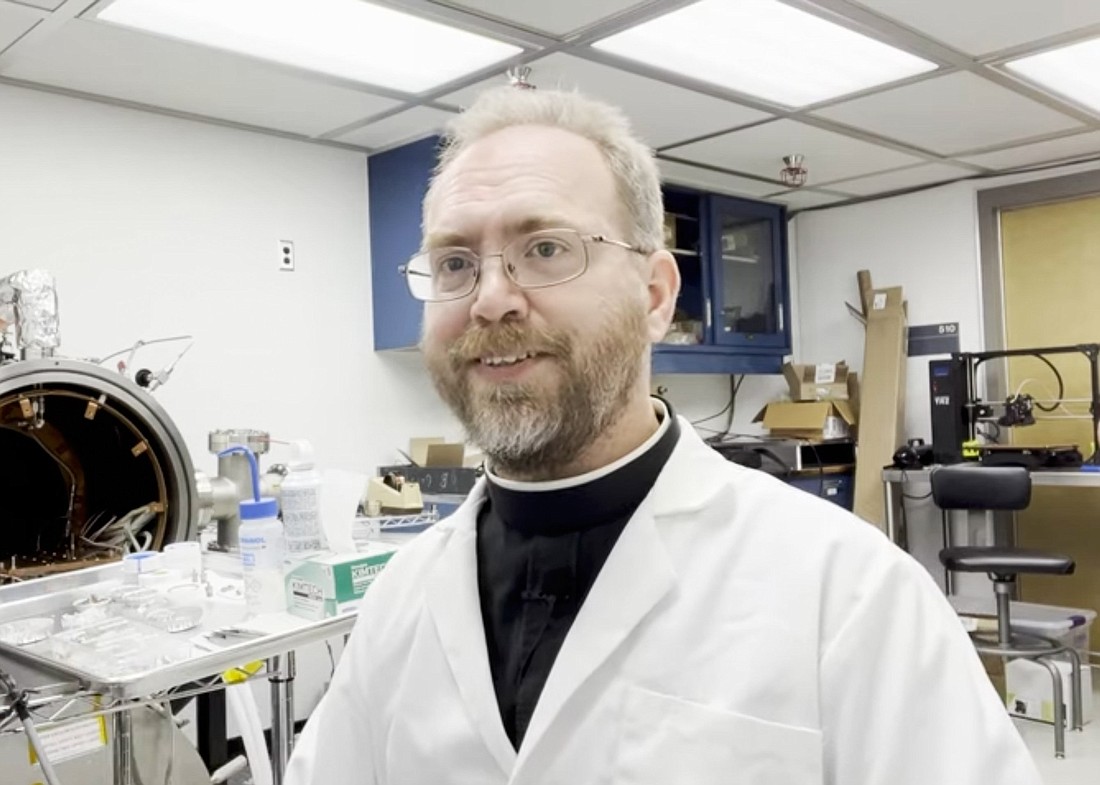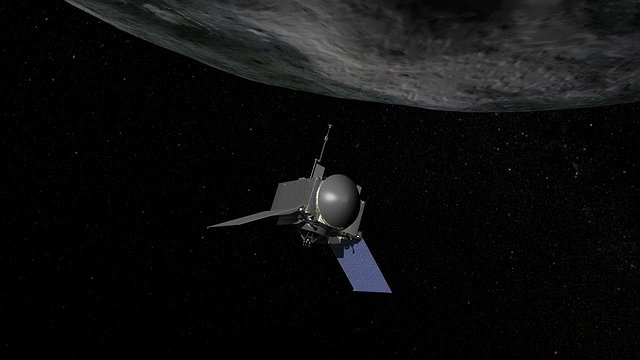Vatican astronomer helps NASA in historic mission to study asteroid
September 19, 2023 at 11:50 a.m.

VATICAN CITY CNS – Jesuit Brother Bob Macke, a Vatican astronomer and meteorite expert, has built a custom device for studying material from the first U.S. mission to collect a sample from an asteroid.
The unmanned spacecraft, Osiris-Rex was launched in 2016 to collect samples on the near-Earth asteroid, Bennu.
After collecting about a cup of material in 2020, the spacecraft is now approaching Earth and, before it continues its space voyage to orbit the Sun, it is due to release its cargo to send the sample back to Earth Sept. 24.
Because of Brother Macke's known expertise in the field, Andrew Ryan, the lead of the mission's sample analysis working group, asked him if he could build the device needed to analyze the density and porosity of the samples to help identify the mysterious rocks on the asteroid's surface, according to Mashable.com Sept. 16.
NASA had strict requirements for this device, called a pycnometer, and the companies Ryan contacted were only willing to sell what they had in stock, not do a custom build, he told Mashable.
Brother Macke, however, was game and he posted his progress and success with a number of videos on his YouTube channel, Macke MakerSpace. He said he built it in five weeks with the help of students at the University of Arizona, which collaborates with the Vatican Observatory's advanced technology telescope in Tucson.
He delivered the device to the NASA Johnson Space Center in Houston in March for a trial run. Curators for the mission will handle the samples and the device, while Brother Macke will operate the software program he built to measure the samples' porosity and density, he said in his April 21 video.
"Our job is to examine it and to find out what's in there. We're trying to answer some basic questions like, are there more than one type of rock inside? Or is everything the same kind of rock? From what we saw on the surface of the asteroid Bennu, we expect to find two and maybe more," he said.
The results of the initial analysis, he said, "will help inform the selection of specimens for more detailed science to be done in laboratories around the world."
Related Stories
Monday, December 15, 2025
E-Editions
Events
VATICAN CITY CNS – Jesuit Brother Bob Macke, a Vatican astronomer and meteorite expert, has built a custom device for studying material from the first U.S. mission to collect a sample from an asteroid.
The unmanned spacecraft, Osiris-Rex was launched in 2016 to collect samples on the near-Earth asteroid, Bennu.
After collecting about a cup of material in 2020, the spacecraft is now approaching Earth and, before it continues its space voyage to orbit the Sun, it is due to release its cargo to send the sample back to Earth Sept. 24.
Because of Brother Macke's known expertise in the field, Andrew Ryan, the lead of the mission's sample analysis working group, asked him if he could build the device needed to analyze the density and porosity of the samples to help identify the mysterious rocks on the asteroid's surface, according to Mashable.com Sept. 16.
NASA had strict requirements for this device, called a pycnometer, and the companies Ryan contacted were only willing to sell what they had in stock, not do a custom build, he told Mashable.
Brother Macke, however, was game and he posted his progress and success with a number of videos on his YouTube channel, Macke MakerSpace. He said he built it in five weeks with the help of students at the University of Arizona, which collaborates with the Vatican Observatory's advanced technology telescope in Tucson.
He delivered the device to the NASA Johnson Space Center in Houston in March for a trial run. Curators for the mission will handle the samples and the device, while Brother Macke will operate the software program he built to measure the samples' porosity and density, he said in his April 21 video.
"Our job is to examine it and to find out what's in there. We're trying to answer some basic questions like, are there more than one type of rock inside? Or is everything the same kind of rock? From what we saw on the surface of the asteroid Bennu, we expect to find two and maybe more," he said.
The results of the initial analysis, he said, "will help inform the selection of specimens for more detailed science to be done in laboratories around the world."











